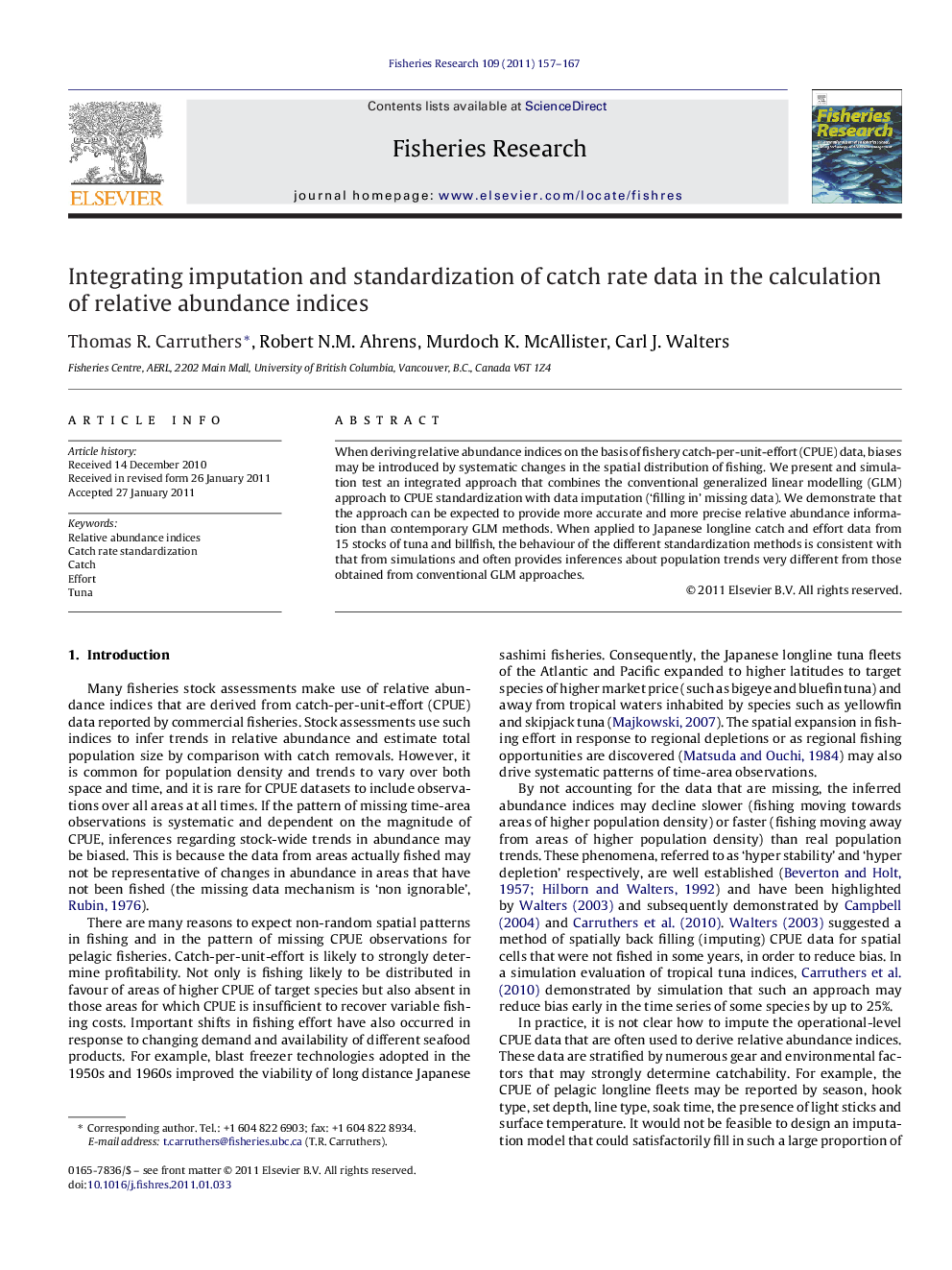| Article ID | Journal | Published Year | Pages | File Type |
|---|---|---|---|---|
| 4543687 | Fisheries Research | 2011 | 11 Pages |
When deriving relative abundance indices on the basis of fishery catch-per-unit-effort (CPUE) data, biases may be introduced by systematic changes in the spatial distribution of fishing. We present and simulation test an integrated approach that combines the conventional generalized linear modelling (GLM) approach to CPUE standardization with data imputation (‘filling in’ missing data). We demonstrate that the approach can be expected to provide more accurate and more precise relative abundance information than contemporary GLM methods. When applied to Japanese longline catch and effort data from 15 stocks of tuna and billfish, the behaviour of the different standardization methods is consistent with that from simulations and often provides inferences about population trends very different from those obtained from conventional GLM approaches.
Research highlights► We evaluate a new method of deriving relative abundance indices from fisheries catch rate data. ► The approach is more reliable than conventional methods and is easy and cheap to apply. ► Using the new method we calculate new relative abundance indices for 15 stocks of tuna and billfish. ► The new indices infer different stock depletion levels to those derived by conventional methods.
